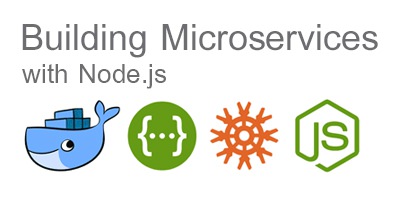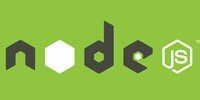Building Microservices with Node.js
รายละเอียด Course ID: wdc-43

Microservices ช่วยให้เราสามารถพัฒนาซอฟแวร์เป็นชิ้นส่วนเล็กๆ ที่สามารถทำงานร่วมกันได้ โดยสามารถพัฒนาแยกกัน ซึ่งนับเป็นข้อดีที่องค์กรต่าง ๆ เริ่มหันมาใช้แนวทางการพัฒนาแบบนี้ ในช่วงไม่กี่ปีที่ผ่านมานี้ Node.js ได้รับความนิยมในหมู่นักพัฒนาอย่างสูง และได้กลายมาเป็นมาตฐานหนึ่งในการพัฒนา Microservice เนื่องจาก Node.js มีประสิทธิภาพ ง่าย และมีความยืดหยุ่นสูง ในหลักสูตรนี้นำเสนอแนวทางและสถาปัตยกรรมของ Microservice ที่พัฒนาบน Node.js
เนื้อหาในหลักสูตรเจาะลึกถึงโซลูชันต่าง ๆ ที่ใช้ในการทำงานเช่น Docker Swarm และ Kubernetes เพื่อให้สามารถ Scale โครงสร้าง microservice ของเราได้ หลักสูตรนี้จะช่วยให้คุณใช้เทคนิคและรูปแบบการออกแบบ microservice ที่มีประสิทธิภาพของคุณเอง
รอบการเปิดอบรม
วิดีโอแนะนำคอร์ส
ไฟล์รายละเอียดคอร์ส
- Building Microservices with Node.js (Course outline PDF)
- โปรไฟล์ของบริษัทไอทีจีเนียส เอ็นจิเนียริ่ง (โปรไฟล์ไอทีจีเนียส PDF)
วัตถุประสงค์
- Implement caching strategies to improve performance
- Integrate logs for all microservices in one place
- Execute long-running tasks in asynchronous microservices
- Create sophisticated deploy pipelines
- Make all of this production-ready
- Use a service mesh for resiliency
กลุ่มเป้าหมาย
- นักเรียนนักศึกษา
- ครู อาจารย์ วิทยากรที่สนใจ
- นักวิชาการ นักไอที หรือผู้ดูและระบบ
- ตลอดจนผู้สนใจทั่วไปใน Microservices with Node.js
ความรู้พื้นฐาน
- พื้นฐานภาษา JavaScript
- พื้นฐานการใช้งาน Node.JS
- พื้นฐานการใช้งานฐานข้อมูล
- พื้นฐานการใช้งาน Windows
ระยะเวลาในการอบรม
- 12 ชั่วโมง
ราคาคอร์สอบรม
- ราคาปกติ 5,500 บาท / คน
- โปรโมชั่นลด 10% เหลือ 4,950 บาท / คน
- ราคาเหมาจ่าย (ผู้อบรมตั้งแต่ 10 คน) ตามแต่ตกลงกัน
- ขอใบเสนอราคา
วิทยากรผู้สอน
คอร์สที่ควรอบรมก่อนหน้า
เนื้อหาการอบรม
Module 1: Design Your Microservices Architecture
What Is a Microservice?
- Define what makes up a microservices based architecture
- Explain why we use microservices
- Understand the key differences between microservices and monolithic applications
Design Principles for Microservice Architectures
- Learn about the key design principles
- Explore how to organize microservices using components of business processes
- See the project management, communication channels to use and governance of the services
Meet Your Class Project
- Learn about the Kona Surf and Snorkel, the application that will be built in the course
- See some basic designs for beginning of the project
- Look at some of the codes that will be used to create the first basis of the application’s reporting feature.
Node.js for Microservices with Express
- Explore models, views and controllers
- See how the controllers and models will work within the MVC pattern
- Learn about the MVC, Model View Controller pattern
Design the Microservices Architecture
- Evaluate the steps of the design
- Design the microservices architecture
Module 2: Setting Up a Microservices Environment
- Organization of Code: Git Repos and VS Code
- See Git Repository Styles – Multi and Mono Repo
- Look at the Visual Studio Code
Node.js and Express
- Program Environments for Node.js
- Learn Callbacks, Event Emitters and Promises
MongoDB
- Install MongoDB
- Connect to MongoDB in Node.js
- Understand Other Database ideas/solutions
Intro to React
- Overview of React
- Create a test harness application
Module 3: Building the Remaining Microservices
Handling Callbacks with Event Emitters and Promises
- See Callbacks
- Explore Event Emitters
- Understand Promises
Setting Up the Remaining Microservices
- Configure the ports
- Build the remaining microservices
Creating an API Gateway
- Build the API Gateway
- Identify alternatives like AWS or load balancers as an API gateway
Module 4: Deploying Microservices
Strategies for Microservice Deployment
- Analyze Multiple Services Per Host
- Apply Single Service Per Host
- Learn about the Container and Serverless Deployment
Deploying Microservices Using PM2
- Install PM2
- Explore Manual Deployment
- Set up the ecosystem.json for deployment
Using Docker Containers
- Learn about Docker
- Learn how to install Docker
- Execute an Ubuntu Linux environment inside a Docker container
Module 5: Scaling Microservices with NGINX
Scaling Microservices
- Understand Load Balancing
- Look at the Decomposing Apps
- See Data Sharding
Installing NGINX on Ubuntu
- Install NGINX
- Analyze NGINX
Load Balancing with NGINX
- Set up the config file
- Start NGINX
- Test the Load Balancer Configuration
Using NGINX as an API Gateway
- Set up the config file
- Reload NGINX
- Test the API Gateway
Module 6: Monitoring and Alerting
Monitoring with PM2 and Keymetrics
- Run PM2 Monitoring from the Command Line
- Register for Keymetrics
- Monitor microservices with Keymetrics
Creating a Monitoring Microservice
- Explore Event Emitter Service Pattern
- Review the code of the Monitoring Microservice
Alerting Upon Microservice Failure
- Set up alerting for the monitoring service
- Review the code of the Send Alert promise
Uptime Robot as an Off-Site Monitoring Service
- Look at the uptime robot overview
- Learn uptime robot register and configure it
- Explore uptime robot Dashboard and alerts configuration


 Basic Node.js (คอร์ส Node.js พื้นฐาน)
Basic Node.js (คอร์ส Node.js พื้นฐาน)







